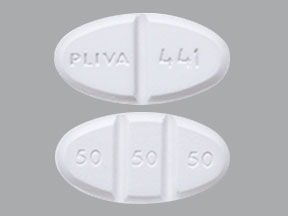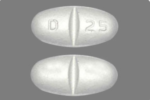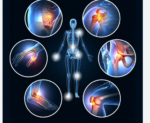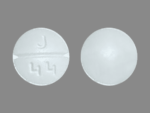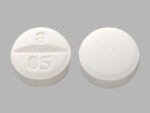Trazodone is used to treat depression. It is thought to work by increasing the activity of serotonin in the brain. Trazodone is an antidepressant.
This medicine is available only with your doctor’s prescription.
This product is available in the following dosage forms:
- Tablet
US Brand Name
- Desyrel
- Desyrel Dividose
- Oleptro
How Trazodone Helps with Headaches
- Serotonin Modulation:
- Serotonin plays a critical role in headache pathophysiology, particularly in migraines. Trazodone increases serotonin levels by inhibiting its reuptake, which can help reduce the frequency and intensity of headaches, particularly migraines.
- The 5-HT2A receptor antagonist action of Trazodone may help in reducing vasodilation (blood vessel widening) in the brain, which is thought to contribute to migraine pain.
- Improved Sleep:
- Sleep disturbances are common in patients with chronic headaches. Poor sleep can worsen headache frequency and severity, creating a vicious cycle. Trazodone’s sedative effects help improve sleep quality, which is crucial for headache management.
- By promoting deep, restorative sleep, Trazodone reduces headache-related fatigue and prevents sleep deprivation, which is a common trigger for both tension-type headaches and migraines.
- Muscle Relaxation:
- Tension-type headaches are often linked to muscle tension in the head, neck, and shoulders. Trazodone’s alpha-1 adrenergic receptor blockade helps to reduce muscle tension and promote relaxation, which can be particularly beneficial for tension-type headaches.
- This reduction in physical tension can help alleviate the pressure and discomfort that characterizes these headaches.
- Anxiolytic Effects:
- Anxiety is a common trigger for both migraines and tension-type headaches. Trazodone’s ability to reduce anxiety can help lower the frequency of stress-induced headaches. By calming the nervous system, it prevents the physical and emotional stress that often contributes to headache episodes.
- Reduction of Hyperarousal:
- For patients who experience hyperarousal or heightened sensitivity to external stimuli (common in migraines), Trazodone can help by reducing the body’s overall state of heightened alertness. This can prevent the worsening of headaches caused by external triggers like bright lights or loud sounds.
Dosage of Trazodone for Headache Management
- Starting Dose: A typical starting dose for headache management is 50-100 mg at night. This helps assess how well the patient tolerates the medication, especially considering its sedative effects.
- Maintenance Dose: Depending on the patient’s response, the dose may be increased to 100-200 mg per night, focusing on improving sleep quality and reducing headache frequency.
- Maximum Dose: In more severe cases or when treating comorbid conditions like anxiety or depression alongside headaches, doses can go up to 300 mg per night, although higher doses are rare for headache management alone.
How Trazodone Compares to Other Headache Treatments
Trazodone is not a first-line treatment for chronic headaches, especially migraines. However, it can be helpful in specific circumstances, particularly when headaches are accompanied by insomnia, anxiety, or depression. It is often used as part of a multimodal treatment approach alongside other medications, such as:
- NSAIDs or Acetaminophen: For acute headache relief.
- Triptans: Specifically for migraines to stop the headache once it starts.
- Antidepressants (e.g., Amitriptyline) or Anticonvulsants (e.g., Topiramate): Commonly used preventatives for migraines and chronic tension headaches.
- Beta-blockers (e.g., Propranolol): Often used to prevent migraines.
Side Effects Related to Headache Treatment
- Drowsiness:
- This is the most common side effect of Trazodone, especially at doses used for improving sleep. While beneficial for nighttime use, it can cause grogginess the next day if the dose is too high or if patients don’t get a full night’s sleep.
- Orthostatic Hypotension:
- A drop in blood pressure when standing up can cause dizziness, lightheadedness, or fainting, which can be problematic, especially for older adults.
- Dry Mouth and Headaches:
- Ironically, some patients may experience headaches as a side effect, although this is usually transient and diminishes as the body adjusts to the medication.
- Cognitive and Motor Impairment:
- Higher doses can cause cognitive slowing or difficulty with motor coordination, though this is less common than with other sedatives.
- Gastrointestinal Issues:
- Some patients may experience nausea or constipation, although these side effects are generally mild and manageable.
Pain Medications, Pain Relief, and Pain Management
